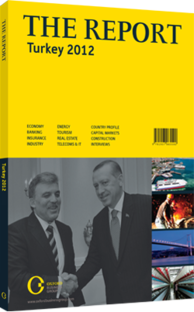OBG talks to Rifat Hisarcıklıoğlu, President, Foreign Economic Relations Board (DE K)

Interview: Rifat Hisarcıklıoğlu
How did MENA political unrest and EU/US economic stagnation effect Turkish firms? Have Turkish exporters been able to diversify to other markets?
RIFAT HİSARCIKLIOĞLU: Historically, European countries have been the major trading partners of Turkish firms. The share of Turkey’s total exports to Europe was 66% in 2007. After global financial crisis started, the demand for Turkish goods from the European market declined, so Turkish firms began looking for alternative markets. Countries in the MENA region, due to their resiliency to the global financial crisis and geographical proximity to Turkey increased in importance, and MENA’s share grew from 18% before the crisis, to 27% in 2010. This was the beginning of the diversification process, and it helped to mitigate the contraction in Europe.
However, we are facing problems in the MENA market following the Arab Spring. The uprising in Syria is particularly important, as Syria has been the main transit route for trade to the MENA region. So, the unrest there has negatively affected our exports to the entire region, because transport via Syria is impossible. The government is looking for alternate trade routes, and one option is Iraq. Overland transport can be maintained by opening new lines to the south.
As a broader strategy, we are looking beyond the Mediterranean region. Our exports to the East Asia and the Americas have been quite low but the problems in the MENA region and the crisis in Europe have orientated us to focus on these markets.
What impact has the depreciation of the lira had on Turkish products in the global market?
HİSARCIKLIOĞLU: The depreciation of lira has helped exporters. Starting in 2001, the Turkish lira increased in value, and for years we complained about its appreciation, because the increase in imports was unavoidable and the rate of export growth was very gradual. Today, the link between the value of the lira and exports is not as strong as it once was, and exports have become more resilient to changes in the value of lira.
The challenge is that the depreciation of lira has caused an increase in inflation. Imported input costs rose due to the exchange rate. Our energy imports amount to $40bn annually and the currency’s decline raises these costs. Additionally, the private sector has $150bn in external debt and $110bn in foreign currency debt to banks in Turkey.
Depreciation might be an obstacle against the profitability of domestic firms which have borrowed in foreign currency. However, the exchange rate had a more stable outlook in the first quarter of 2012 than it did in 2011, so we are not expecting an intense problem due to exchange rate volatility.
What factors are driving the current account deficit, and how can these issues be addressed?
HİSARCIKLIOĞLU: The current account deficit has been a major source of vulnerability for Turkey for years.
In 2011 we hit the record of $134.6bn in exports, but at the same time we recorded $241bn in imports, resulting in a deficit-to-GDP ratio above 10%. This rapid deterioration resulted from the buoyant economic growth driven by domestic demand in the absence of export recovery. It had been expected that the growth in 2011 would be around 8%, but the economy surpassed 9.6% growth in nine months, and such elevated growth leads to increased imports.
Our production structure is one of the other reasons for the existing level of the deficit. We need to import to produce. This is a structural problem, and to solve it we need effective industrial policies at the national level. The Ministry of Economy is currently in the process of developing an input acquisition strategy aimed at improving the availability of inputs needed by industry, enhancing efficiency and increasing the competitive capacity of industry by reducing the dependency on imported intermediate goods.
The input acquisition strategy can help us to solve our current dilemma by analysing the needs of producers and encouraging local alternatives to imports.
You have reached the limit of premium articles you can view for free.
Choose from the options below to purchase print or digital editions of our Reports. You can also purchase a website subscription giving you unlimited access to all of our Reports online for 12 months.
If you have already purchased this Report or have a website subscription, please login to continue.

